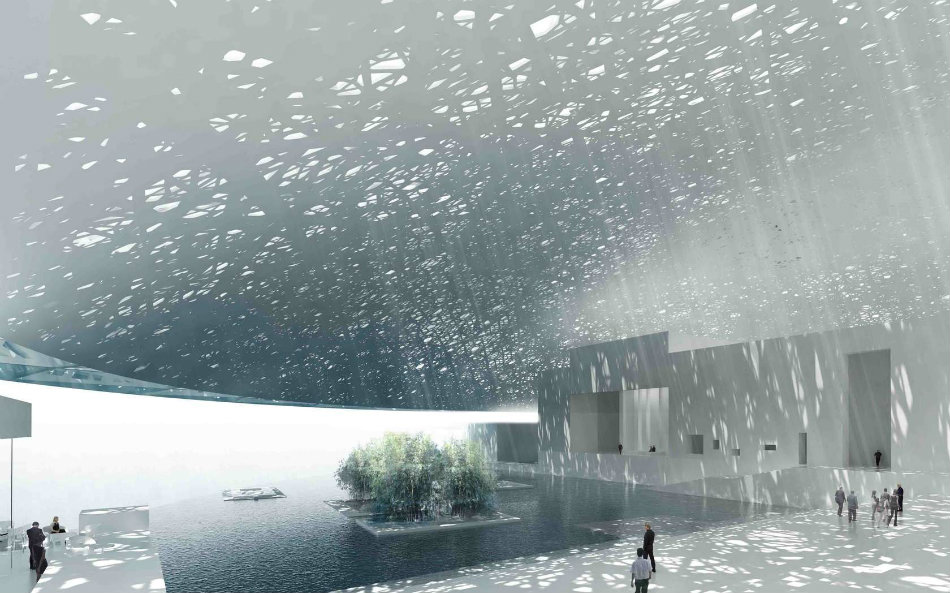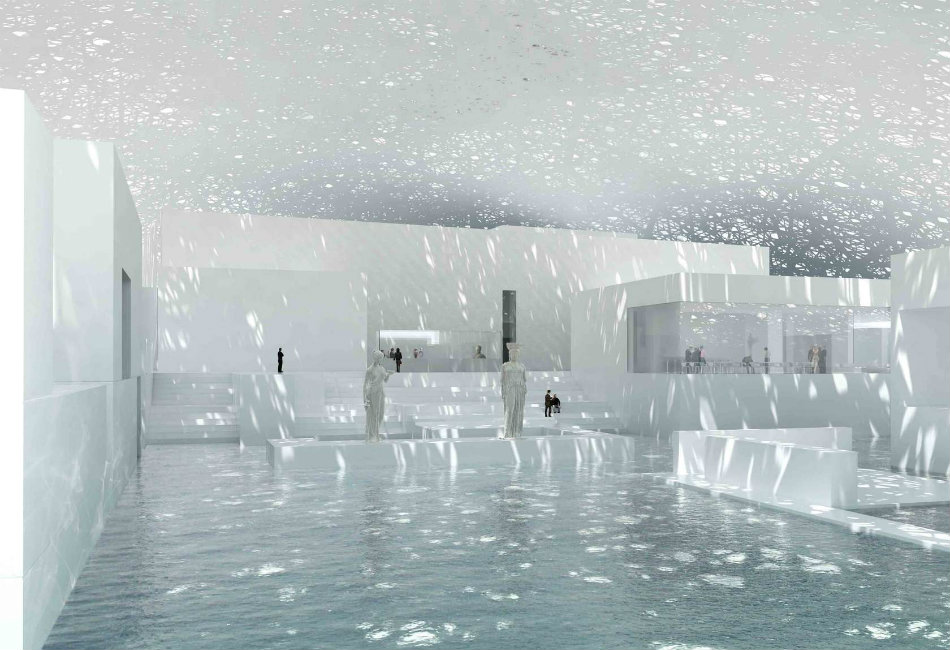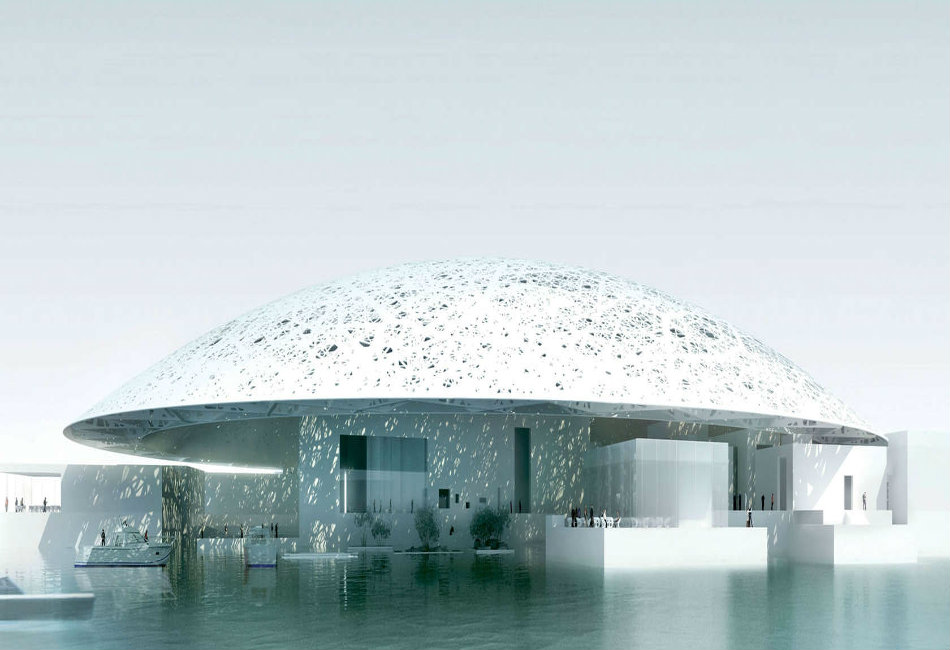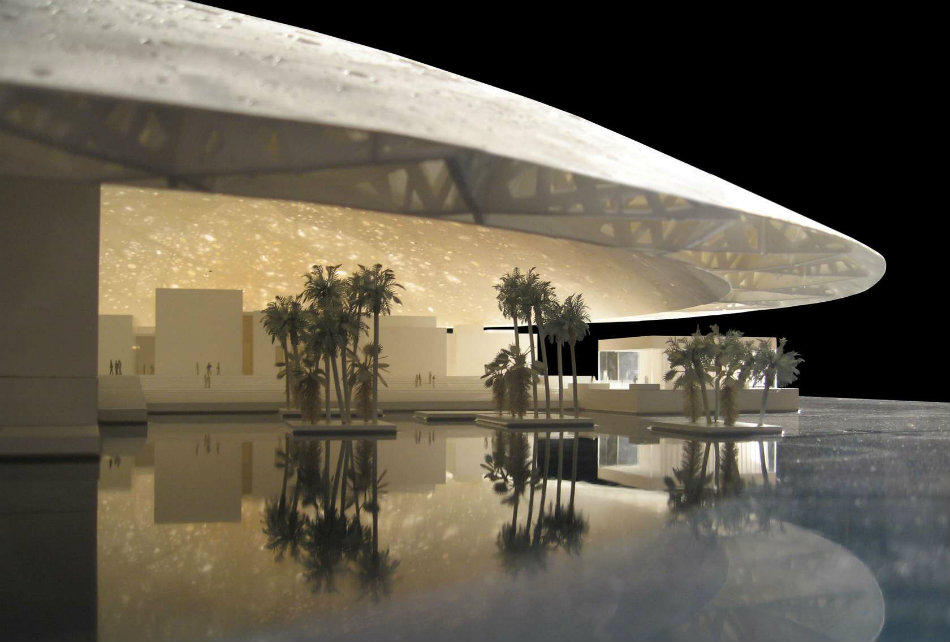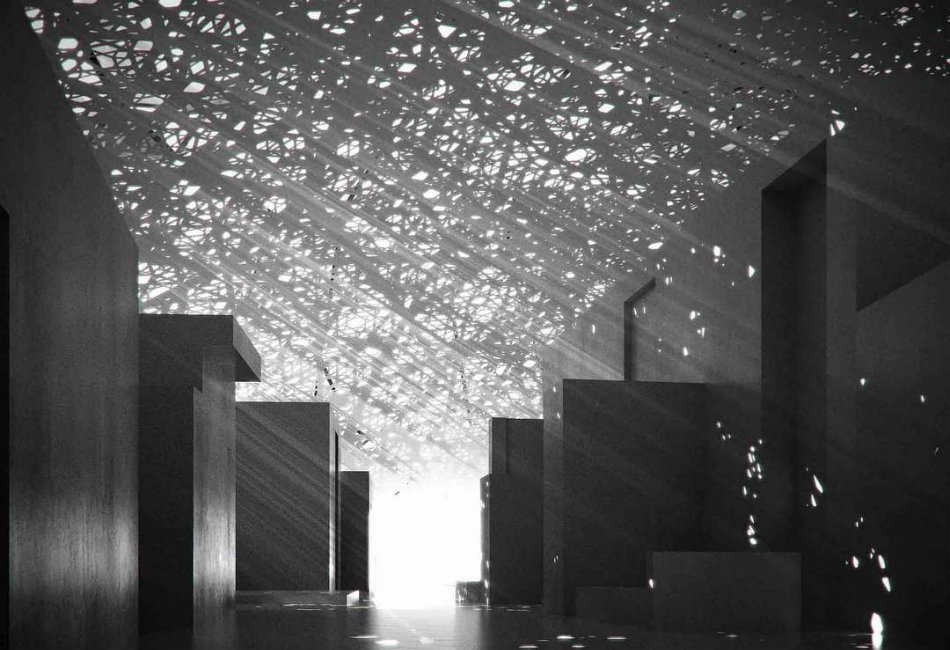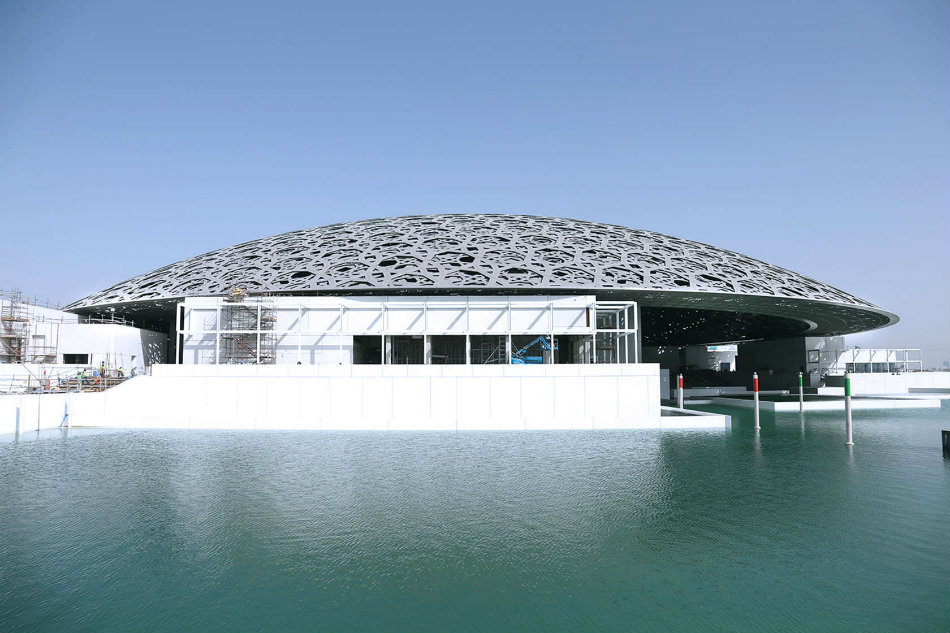The widespread flooding of a building is usually the stuff of architects’ nightmares, but in the hazy heat of the desert in the United Arab Emirates, the intentional infiltration of water beneath the dome of the new Louvre Abu Dhabi constituted a triumphant moment for Jean Nouvel.
The French architect sent a wave of intrigue throughout the worlds of both art and architecture with the release of beautiful renderings of this key cultural landmark three years ago. Now, the journey from concept to built reality is nearly complete, and an amazing time-lapse video was released this week showing a shimmering lagoon emerging between the buildings on the edge of the Persian Gulf.
The powers that be in Abu Dhabi have long since realized that their extraordinary oil-fueled expansion will eventually require a solid economic backup from a source other than the black gold beneath their sands. As in Dubai, it appears they are determined to plug any potential holes in their long-term financial plan with the banknotes of tourists and foreign corporations … and cultural assets form the next phase of their strategy.
Jean Nouvel — staunch defender of Gehry’s new Parisian gallery — would no doubt argue that any beautiful vessel for exhibiting art and culture should be celebrated, no matter where it may be docked, and his design for the Louvre’s Middle Eastern annex makes it incredibly difficult to argue against this view. The concept, evoking the atmosphere of a shady oasis within the desert landscape, looks set to provide an extraordinary and unique environment in which to view art.
The primary architectural gesture — an expansive, perforated dome, hovering above the manmade archipelago — draws on traditional methods of passive cooling, echoing the woven palm-frond roofs that are typical of the region. The 180-meter-wide (590-feet-wide) latticed structure allows natural light to permeate the heart of the complex, with waterways weaving between podiums and platforms; this promises to provide a magical series of spaces, with the line between internal galleries and external street-like conditions wonderfully blurred.
Nouvel has thankfully avoided the recent tendency of many “Starchitects” to grandstand, producing amorphous, geometric monoliths in a bid to create instant landmarks. Instead, Nouvel works wonders with layers, textures, light and shade in a way that suits contemporary Middle Eastern architectural design to a T.
Should the Louvre have sold its name, or loaned its priceless artworks to a fledgling museum in a potentially hostile desert environment? That is a question that will continue to divide people across the art world for years to come. The ethical debate may rage on, but from a purely architectural viewpoint, Nouvel may just have conceived one of the greatest masterpieces of the 21st century.
